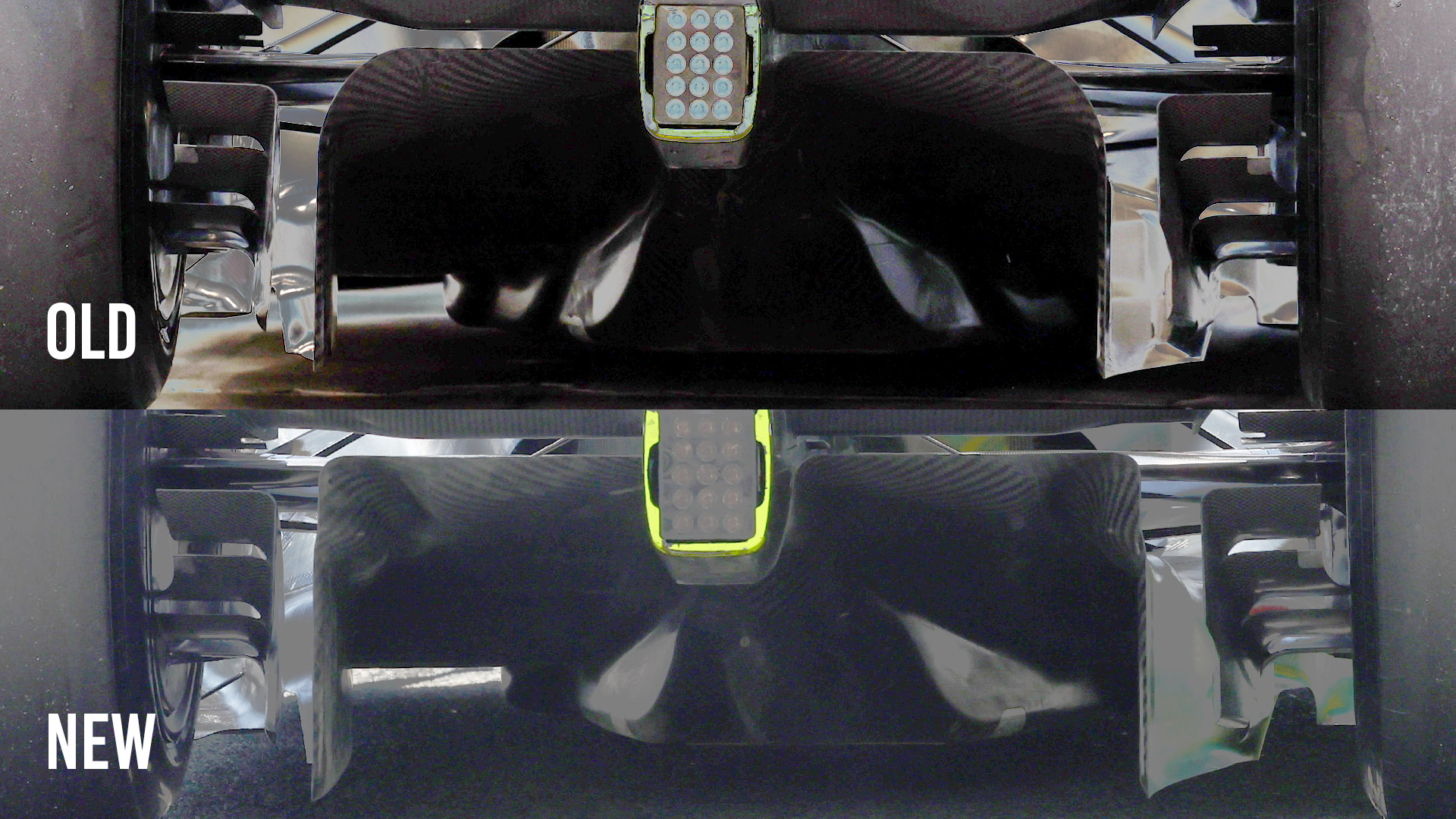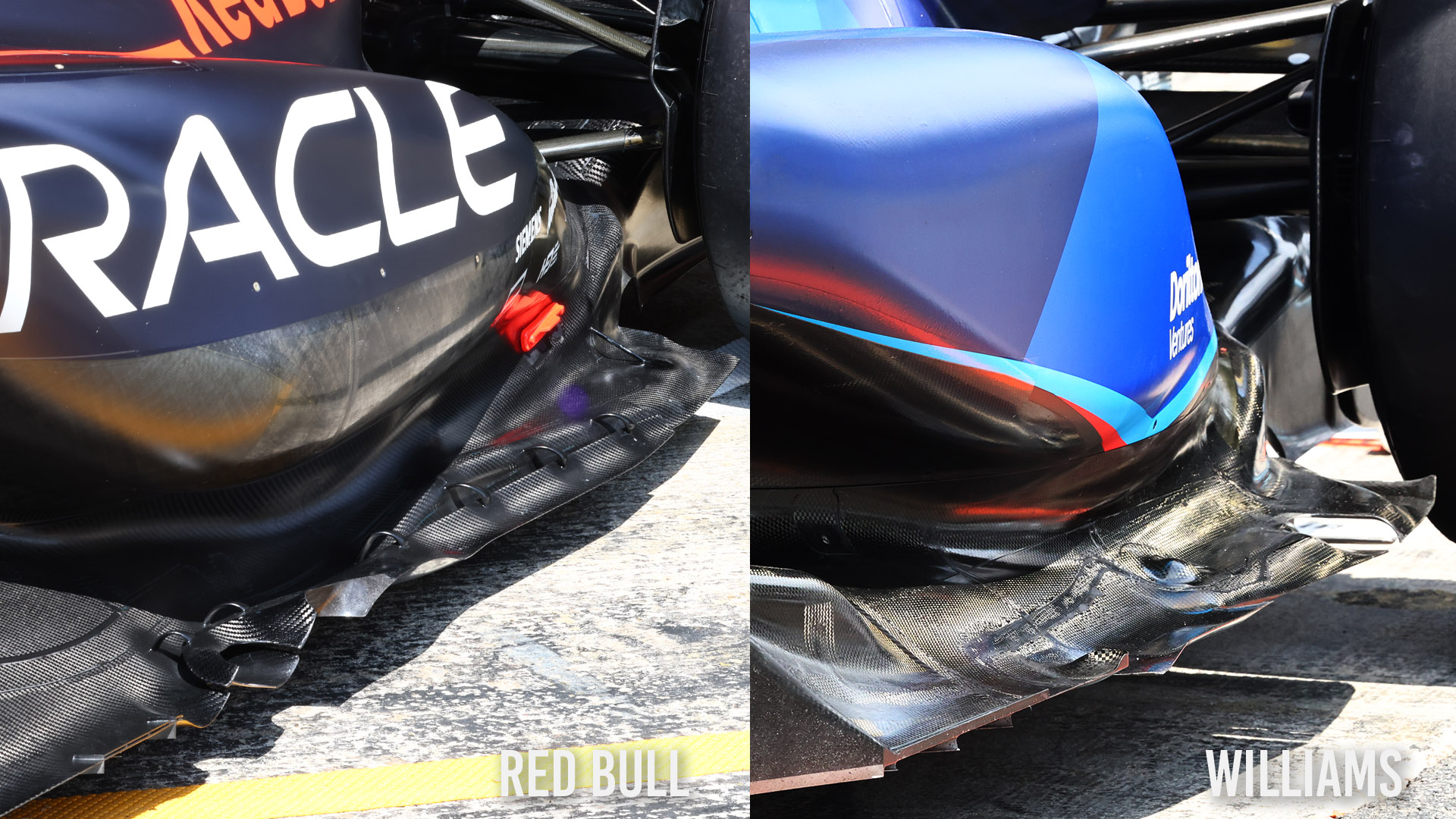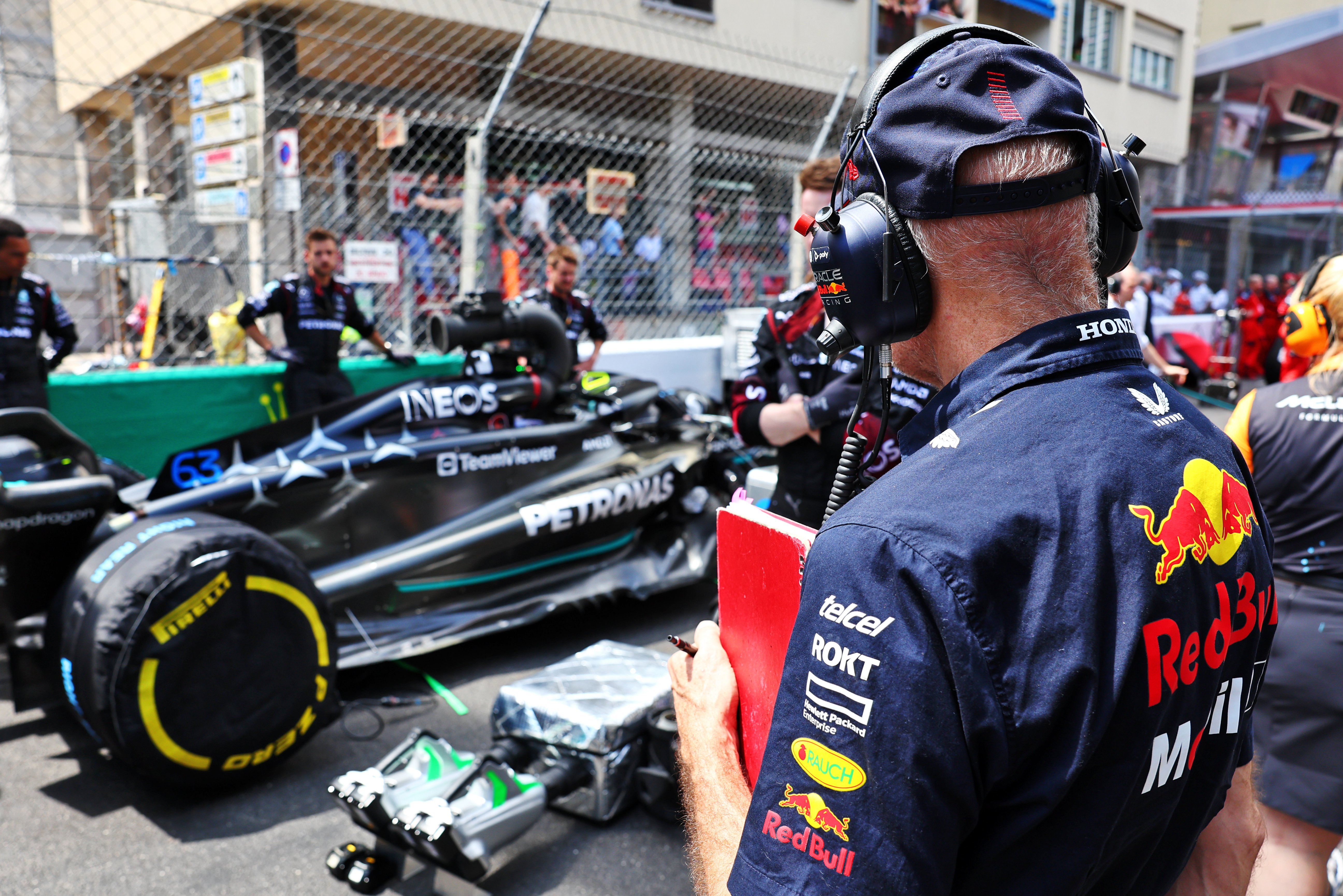Up Next

Red Bull made a remarkable admission when it revealed its latest Formula 1 car upgrades at the Spanish Grand Prix earlier this month.
Under regulations introduced in 2022, teams must now disclose new parts in a document issued ahead of the start of free practice.
Unusually, Red Bull stated explicitly in this document that one of its new parts took inspiration from competitor designs. So at a time when everyone is looking to Red Bull for ideas, it is drawing them from slower rivals.
And most remarkably, it then emerged that Red Bull first saw this particular idea on the team that’s been slowest for most of the new ground effect regulations era so far.

The change was a very subtle detail, but one that conferred a small advantage.
Red Bull described the top corners of its diffuser as being reprofiled for greater curvature, with the aim of a small increase in load. It’s that element where it said it was “taking inspiration from competitor designs” in its upgrades document submission.
This means the introduction of a slightly smaller radius in the upper corner of the diffuser exit, which The Race’s technical expert Gary Anderson suggested would effectively increase the open area of the diffuser. Not by much, but by enough to make a difference and potentially meaning a slight increase in downforce by making the diffuser work harder.
The potential downside would be an increased risk of aerodynamic stalling, but Red Bull clearly felt the upsides were greater – and it then completely dominated the Spanish GP with Max Verstappen in a car running this diffuser tweak.
Initial investigations suggested it was Ferrari that Red Bull had taken inspiration from. And though it comfortably beat Ferrari to the 2022 title and has left it trailing this season, the Ferrari’s occasional flurries of pace on a single lap in particular mean copying one of its ideas has logic.
But then Red Bull chief engineer Paul Monaghan revealed it was actually pioneered by Williams, the slowest team in F1.
“That piece of floor design was out in early 2022,” he said. “I recall the Williams had it quite early on then some other people had it.”

Williams received some mockery when it became the latest team to have its floor design exposed by its car being lifted by a crane following Logan Sargeant’s Spanish GP practice crash.
The underside was strikingly simple compared to the Red Bull design seen in full in Monaco and although some of that was down to the angle and focus not doing it justice, team principal James Vowles admitted Williams is lacking in detail – just as it is in the visible areas of the car, as this comparison of the Red Bull and Williams floor edge designs exemplifies.

But the fact Red Bull still saw something it liked on the Williams last year and then worked hard to incorporate it is a reminder that even the most uncompetitive F1 team is still packed with very accomplished people doing incredible and innovative things.
It took a while for Red Bull to actually make the Williams idea work within its own design.
“It didn’t necessarily work for us, we’ve looked at it a couple of times, and it’s a small benefit,” Monaghan added.
“It looks like a slightly larger change than is actually realised. You’re coming towards the back of the floor so it’s not going to be the most influential thing. It helps a little bit. And you’re quite constrained, if you look height-wise at where we can do it.
“So it’s been there for a while in our work. So we were in a position where we could include that in that local bit of the floor and we’ve done it.”
Every little helps. And Red Bull found a way to make something first run by F1’s last-placed team useful for its all-conquering 2023 F1 car.
“You can’t assume that you have the best solution in all areas of the car when you first put your car on the ground,” said Monaghan.

And that attitude is one Red Bull’s design chief Adrian Newey certainly holds.
It’s true Newey is a tremendous mine of creativity and ideas and is still profoundly influential in setting the broad concept of Red Bull’s F1 cars. But he doesn’t operate in a vacuum and is always seeking inspiration.
Take a glance at the pre-race grid at most grands prix. In among the hustle and bustle as the final preparations are made, Newey will be seen, clipboard in hand, prowling around and taking a good, long look at rival cars. And not just the ones at the front, but the ones lower down the order as well.

Newey may be a visionary genius, but part of his brilliance is the lack of technical arrogance. He will look, analyse, understand and seize on any ideas he likes the look of on rival cars. It’s that curiosity and engagement that has allowed him to be at the forefront of F1 car design for over 30 years.
The design and engineering culture created by Newey at Red Bull makes it open to new ideas and willing to make changes by following paths taken by others.
Call it design humility or engineering curiosity, it’s a significant part of Newey’s way of doing things and therefore is in Red Bull’s DNA. As he explains in his brilliant book How to Build A Car, as a schoolboy he used to draw racing cars from images, as he put it “copying them freehand, trying to reproduce them but also customise them at the same time, adding my own detail”.
Newey isn’t unique in looking at rival cars. Every team studies visual details of other cars to take inspiration and attempts to integrate ideas into their own design and development process. But Newey is probably the best at looking at an idea, interrogating it and deciding if there’s a decent chance it can be of use.
It then takes a far bigger team to investigate the idea and potentially incorporate it into the car. But it all starts with a quick look.





